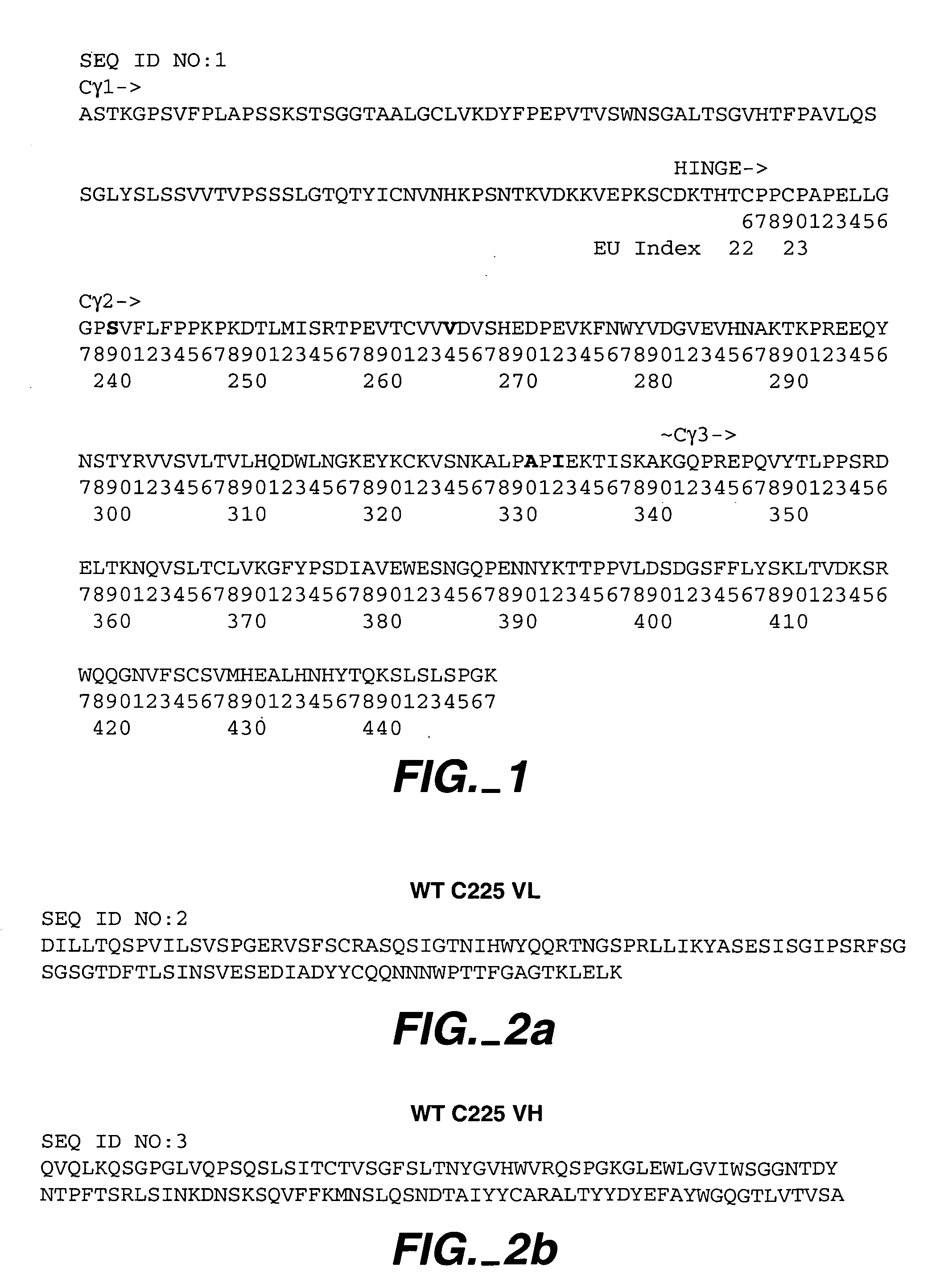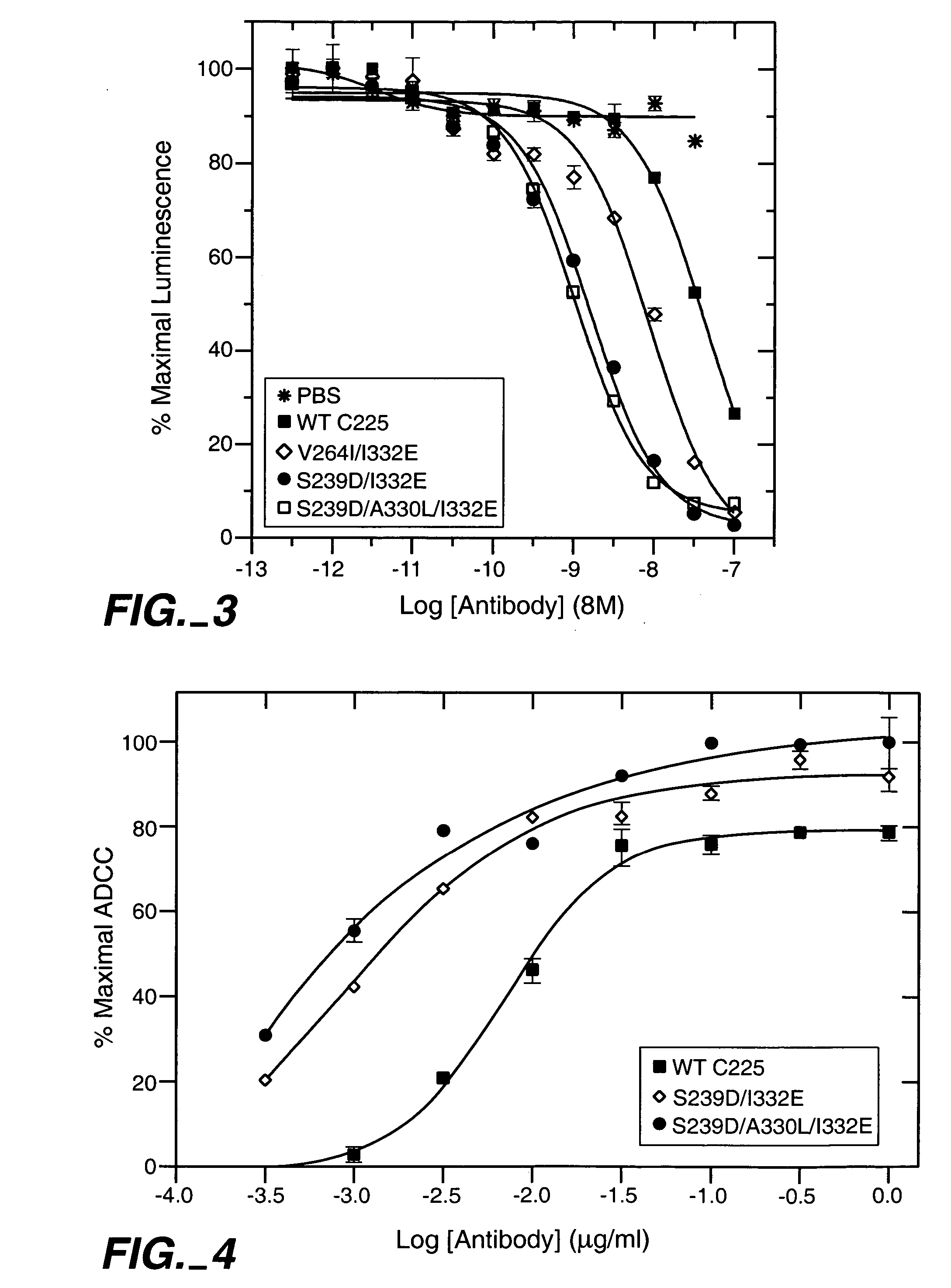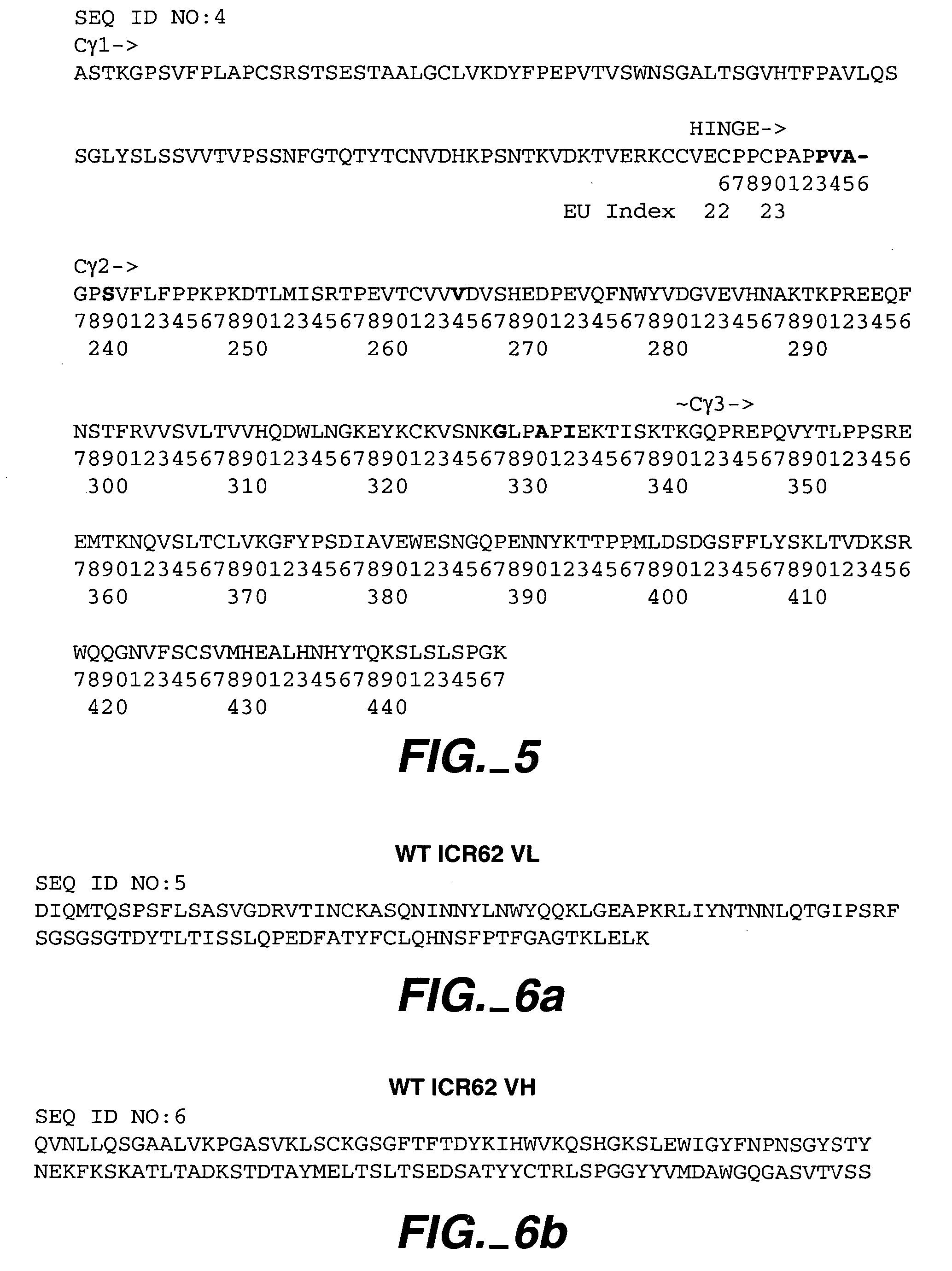Optimized proteins that target the epidermal growth factor receptor
a technology optimized proteins, applied in the field of optimized proteins that target the epidermal growth factor receptor, can solve the problems of poor prognosis in cancer patients, correlation of epidermal growth factor overexpression, and another level of complexity, and achieve the effect of facilitating the effect of effector function
- Summary
- Abstract
- Description
- Claims
- Application Information
AI Technical Summary
Benefits of technology
Problems solved by technology
Method used
Image
Examples
example 1
Anti-EGFR Antibodies with Enhanced Effector Function
[0199] Antibodies are the most commonly used class of therapeutic proteins. As discussed, a number of favorable properties are imparted on antibodies by the Fc region, including but not limited to favorable pharmacokinetics and effector function. The latter property is particularly relevant for anti-cancer antibodies, and thus is an important property for antibodies that target EGFR. As has been discussed above and described more fully in U.S. Ser. No. 10 / 672,280; PCT US03 / 30249; U.S. Ser. No. 10 / 822,231; U.S. Ser. Nos. 60 / 568,440, 60 / 627,026, 60 / 626,991 and 60 / 627,774, amino acid modifications have been engineered that provide antibodies with enhanced effector function. A number of amino acid substitutions obtained in these studies, including but not limited to S239D, V2641, A330L, I332E, and combinations thereof, provide optimal enhancements in binding to FcγRs and substantially enhanced ADCC. FIG. 1 presents the amino acid sequ...
example 2
Anti-EGFR Antibodies with Reduced Immunogenicity
[0205] The C225 variable region utilized in Example 1 is derived from a murine antibody. Indeed due to the wide use of hybridoma technology, a substantial number of antibodies are derived from nonhuman sources, for example rodent. However, nonhuman proteins are often immunogenic when administered to humans, thereby greatly reducing their therapeutic utility. Immunogenicity is the result of a complex series of responses to a substance that is perceived as foreign, and may include production of neutralizing and non-neutralizing antibodies, formation of immune complexes, complement activation, mast cell activation, inflammation, hypersensitivity responses, and anaphylaxis. Several factors can contribute to protein immunogenicity, including but not limited to protein sequence, route and frequency of administration, and patient population. Immunogenicity may limit the efficacy and safety of a protein therapeutic in multiple ways. Efficacy ...
example 3
Optimized Anti-EGFR Antibodies
[0217] The optimal anti-EGFR clinical candidate may comprise amino acid modifications that both enhance effector function and reduce immunogenicity relative to a parent anti-EGFR protein. A variety of proteins that target EGFR are contemplated herein that comprise one or more substitutions which provide enhanced effector function, reduced immunogenicity, or both. In a preferred embodiment, the protein of the present invention comprises amino acid modifications that enhance effector function and reduce immunogenicity. FIG. 13 provides the light and heavy chain sequences of an EGFR targeting antibody that comprises H4 / L3 C225, as described above, combined with a number of possible variant IgG1 constant regions that provide enhanced effector function. FIG. 14 provides the light and heavy chain sequences of an EGFR targeting antibody that comprises H7 / L4 C225, as described above, combined with a number of possible variant IgG2 constant regions that provide...
PUM
| Property | Measurement | Unit |
|---|---|---|
| time | aaaaa | aaaaa |
| time | aaaaa | aaaaa |
| time | aaaaa | aaaaa |
Abstract
Description
Claims
Application Information
 Login to View More
Login to View More - R&D
- Intellectual Property
- Life Sciences
- Materials
- Tech Scout
- Unparalleled Data Quality
- Higher Quality Content
- 60% Fewer Hallucinations
Browse by: Latest US Patents, China's latest patents, Technical Efficacy Thesaurus, Application Domain, Technology Topic, Popular Technical Reports.
© 2025 PatSnap. All rights reserved.Legal|Privacy policy|Modern Slavery Act Transparency Statement|Sitemap|About US| Contact US: help@patsnap.com



